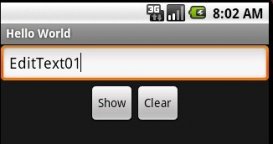二維碼無處不在,掃一掃有禮品哦,現(xiàn)在二維碼這么流行,想必大家不是很清楚二維碼是怎么生成的吧,現(xiàn)在小編通過給大家分享本文幫助大家學(xué)習(xí)二維碼生成的方法。
其實(shí)主要是利用goggle發(fā)布的jar來使用的此功能。
1、二維碼的生成
將Zxing-core.jar 包加入到classpath下。
二維碼的生成需要借助MatrixToImageWriter類,該類是由Google提供的,可以將該類拷貝到源碼中,這里我將該類的源碼貼上,可以直接使用。
直接可以生成二維碼的代碼
|
1
2
3
4
5
6
7
8
9
10
11
|
public void test1() throws Exception{ String content = "www.baidu.com"; String path = "d://"; MultiFormatWriter multiFormatWriter = new MultiFormatWriter();//Zxing是Google提供的關(guān)于條碼 Map hints = new HashMap(); hints.put(EncodeHintType.CHARACTER_SET, "UTF-8"); BitMatrix bitMatrix = multiFormatWriter.encode(content, BarcodeFormat.QR_CODE, 400, 400,hints);//這里是照片的大小 File file1 = new File(path,"my.jpg"); MatrixToImageWriter.writeToFile(bitMatrix, "jpg", file1); System.out.println("執(zhí)行完畢"); } |
當(dāng)我們能發(fā)現(xiàn),這個代碼拷貝上后發(fā)現(xiàn)有一個MatrixToImageWriter報(bào)錯,所以需要我們?nèi)フ遥沁@里我貼出代碼,可以直接使用。
|
1
2
3
4
5
6
7
8
9
10
11
12
13
14
15
16
17
18
19
20
21
22
23
24
25
26
27
28
29
30
31
32
33
34
35
36
|
import com.google.zxing.common.BitMatrix; import javax.imageio.ImageIO; import java.io.File; import java.io.OutputStream; import java.io.IOException; import java.awt.image.BufferedImage; public final class MatrixToImageWriter { private static final int BLACK = 0xFF000000; private static final int WHITE = 0xFFFFFFFF; private MatrixToImageWriter() {} public static BufferedImage toBufferedImage(BitMatrix matrix) { int width = matrix.getWidth(); int height = matrix.getHeight(); BufferedImage image = new BufferedImage(width, height, BufferedImage.TYPE_INT_RGB); for (int x = 0; x < width; x++) { for (int y = 0; y < height; y++) { image.setRGB(x, y, matrix.get(x, y) ? BLACK : WHITE); } } return image; } public static void writeToFile(BitMatrix matrix, String format, File file) throws IOException { BufferedImage image = toBufferedImage(matrix); if (!ImageIO.write(image, format, file)) { throw new IOException("Could not write an image of format " + format + " to " + file); } } public static void writeToStream(BitMatrix matrix, String format, OutputStream stream) throws IOException { BufferedImage image = toBufferedImage(matrix); if (!ImageIO.write(image, format, stream)) { throw new IOException("Could not write an image of format " + format); } } } |
現(xiàn)在就可以d盤的根目錄下載看生成的二維碼了
二維碼解析
和生成一樣,我們需要一個輔助類( BufferedImageLuminanceSource),同樣該類Google也提供了,這里我同樣將該類的源碼貼出來,可以直接拷貝使用個,省去查找的麻煩
|
1
2
3
4
5
6
7
8
9
10
11
12
13
14
15
16
17
18
19
20
21
22
23
24
25
26
27
28
29
30
31
32
33
34
35
36
37
38
39
40
41
42
43
44
45
46
47
48
49
50
51
52
53
54
55
56
57
58
59
60
61
62
63
64
65
66
67
68
69
70
71
72
73
74
75
76
77
|
BufferedImageLuminanceSource import com.google.zxing.LuminanceSource; import java.awt.Graphics2D; import java.awt.geom.AffineTransform; import java.awt.image.BufferedImage; public final class BufferedImageLuminanceSource extends LuminanceSource { private final BufferedImage image; private final int left; private final int top; public BufferedImageLuminanceSource(BufferedImage image) { this(image, 0, 0, image.getWidth(), image.getHeight()); } public BufferedImageLuminanceSource(BufferedImage image, int left, int top, int width, int height) { super(width, height); int sourceWidth = image.getWidth(); int sourceHeight = image.getHeight(); if (left + width > sourceWidth || top + height > sourceHeight) { throw new IllegalArgumentException("Crop rectangle does not fit within image data."); } for (int y = top; y < top + height; y++) { for (int x = left; x < left + width; x++) { if ((image.getRGB(x, y) & 0xFF000000) == 0) { image.setRGB(x, y, 0xFFFFFFFF); // = white } } } this.image = new BufferedImage(sourceWidth, sourceHeight, BufferedImage.TYPE_BYTE_GRAY); this.image.getGraphics().drawImage(image, 0, 0, null); this.left = left; this.top = top; } @Overridepublic byte[] getRow(int y, byte[] row) { if (y < 0 || y >= getHeight()) { throw new IllegalArgumentException("Requested row is outside the image: " + y); } int width = getWidth(); if (row == null || row.length < width) { row = new byte[width]; } image.getRaster().getDataElements(left, top + y, width, 1, row); return row; } @Overridepublic byte[] getMatrix() { int width = getWidth(); int height = getHeight(); int area = width * height; byte[] matrix = new byte[area]; image.getRaster().getDataElements(left, top, width, height, matrix); return matrix; } @Overridepublic boolean isCropSupported() { return true; } @Overridepublic LuminanceSource crop(int left, int top, int width, int height) { return new BufferedImageLuminanceSource(image, this.left + left, this.top + top, width, height); } @Overridepublic boolean isRotateSupported() { return true; } @Overridepublic LuminanceSource rotateCounterClockwise() { int sourceWidth = image.getWidth(); int sourceHeight = image.getHeight(); AffineTransform transform = new AffineTransform(0.0, -1.0, 1.0, 0.0, 0.0, sourceWidth); BufferedImage rotatedImage = new BufferedImage(sourceHeight, sourceWidth, BufferedImage.TYPE_BYTE_GRAY); Graphics2D g = rotatedImage.createGraphics(); g.drawImage(image, transform, null); g.dispose(); int width = getWidth(); return new BufferedImageLuminanceSource(rotatedImage, top, sourceWidth - (left + width), getHeight(), width); } } |
解析二維碼的代碼
|
1
2
3
4
5
6
7
8
9
10
11
12
13
14
15
|
MultiFormatReader formatReader = new MultiFormatReader(); File file = new File(filePath); BufferedImage image = ImageIO.read(file);; LuminanceSource source = new BufferedImageLuminanceSource(image); Binarizer binarizer = new HybridBinarizer(source); BinaryBitmap binaryBitmap = new BinaryBitmap(binarizer); Map hints = new HashMap(); hints.put(EncodeHintType.CHARACTER_SET, "UTF-8"); Result result = formatReader.decode(binaryBitmap,hints); System.out.println("result = "+ result.toString()); System.out.println("resultFormat = "+ result.getBarcodeFormat()); System.out.println("resultText = "+ result.getText()); tch (Exception e) { e.printStackTrace(); |
現(xiàn)在這樣可以在控制臺看到二維碼的內(nèi)容。
以上所述是小編給大家介紹的ZXing-core生成二維碼的方法并解析的相關(guān)知識,希望對大家有所幫助,如果大家有任何疑問請給我留言,小編會及時回復(fù)大家的。在此也非常感謝大家對服務(wù)器之家網(wǎng)站的支持!












